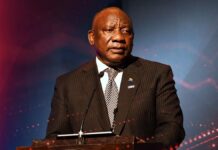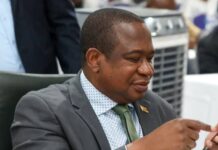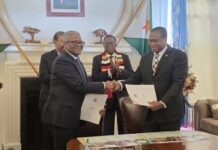HARARE – The Government of Zimbabwe has maintained firm control over public spending in the first half of 2025, keeping expenditures within approved budget limits despite a slight shortfall in revenue collections, according to the latest Treasury report.
The Consolidated Statement of Budget and Actual Figures for the period ending 30 June 2025 shows that while total revenue underperformed by less than 1 percent, the Treasury correspondingly adjusted its expenditure to stay broadly in line with fiscal targets.
Total revenue amounted to ZiG117.6 billion against a projected ZiG118.7 billion, reflecting a marginal underperformance driven mainly by weaker corporate and trade-related tax inflows. Tax collections — the mainstay of Government income — totalled ZiG115.5 billion, slightly below the ZiG117.1 billion forecast.
Within this, taxes on income and profits reached ZiG45.3 billion, about 3 percent short of expectations, while taxes on goods and services — the largest revenue component — stood at ZiG55.9 billion, compared to a ZiG56.9 billion target. Customs and excise duties registered ZiG9.6 billion, missing the ZiG10.1 billion goal due to subdued import activity.
Non-tax revenue, including levies and fees, contributed ZiG2 billion, about 6 percent below plan.
Economist Misheck Rupungu said the modest revenue dip reflects tighter liquidity and reduced consumer spending as the economy adjusts to the ZiG currency framework.
“We are seeing a structural slowdown in demand, which naturally affects consumption-based taxes. The positive takeaway is that Government avoided excessive borrowing,” he noted.
On the expenditure side, total spending reached ZiG127.9 billion, around 1 percent below the ZiG129 billion budget ceiling. Recurrent expenses totalled ZiG118.9 billion, slightly under the ZiG120.4 billion target, largely due to delayed disbursements and cost restraint across ministries.
Compensation of employees — the single largest budget item — consumed ZiG75.2 billion, or 63 percent of recurrent expenditure, remaining within the payroll ceiling despite ongoing wage adjustments.
Capital expenditure came in at ZiG9 billion, marginally above the ZiG8.6 billion allocation, reflecting accelerated investment in key infrastructure projects in transport and energy. Analysts described the limited overshoot as a “growth-friendly deviation” that balanced fiscal prudence with development priorities.
Economic analyst Namatai Maeresera said the Treasury’s fiscal restraint, despite revenue pressures, marks a shift toward more disciplined financial management.
“The Government deserves credit for maintaining spending control rather than expanding the deficit for populist reasons. This discipline strengthens confidence in the ZiG regime and supports ongoing disinflation,” he said.
The mid-year fiscal outcome recorded a ZiG10.3 billion deficit, slightly below the projected ZiG11.4 billion, reinforcing the Government’s commitment to fiscal sustainability. Treasury officials said the alignment between spending and available resources reflects Zimbabwe’s continued progress under its economic stabilisation agenda.
Mr Rupungu added that maintaining this trajectory would help prevent inflationary pressures:
“Fiscal prudence is vital. Matching expenditure with real revenue reduces reliance on monetary financing, which has been the main inflation driver in previous years,” he said.
Looking ahead, Treasury is banking on stronger second-half performance supported by Zimra’s digital modernisation and tax compliance initiatives. Efforts to broaden the tax base through SME formalisation and improved collection efficiency are expected to boost revenue.
Non-tax earnings from mineral royalties, user fees, and remittances are also projected to contribute modestly as commodity exports stabilise.
Analysts say the next phase of fiscal management must focus on efficiency rather than austerity.
“The goal should be to spend smarter, not necessarily less — prioritising productive investment and social protection,” Mr Maeresera said.
With spending kept within limits and reforms ongoing, Zimbabwe’s fiscal outlook remains anchored on stability. Economists note that maintaining this discipline, while supporting growth, could enhance investor confidence and fiscal credibility heading into 2026.
However, risks persist — including global commodity volatility and potential climate shocks — which could test the Government’s ability to balance growth and stability in the months ahead.
Overall, the half-year fiscal statement portrays a picture of steady, cautious management of public finances, with Treasury’s restraint signalling a growing commitment to long-term fiscal responsibility.











